Editor's note: La Vie closed on July 15th 2018.
La Vie opened in April 2006, with chef/owner Thomas Bühner having moved here from his previous restaurant La Table in Dortmund, where he had worked since 1991. He had previously worked under top German chef Harold Wolfhart at Schwarzwaldstube (in 1989) in the Black Forest. Many of the ingredients used are grown in the restaurant’s kitchen garden, which is half an hour drive outside the town of Osnabruck, where the restaurant is situated. Osnabruck itself is a pleasant and quite pretty place, with a well-preserved old town. La Vie is in the heart of the old town area, close to the Town Hall. The restaurant gained its third Michelin star in 2012.
The dining room seats just 30 diners, but 15 chefs work in the kitchen, an unusually high ratio of chefs to diners that is explained when you see the amount of work that has gone into the dishes, which could not be accused of simplicity. There is an emphasis on high quality ingredients, and most of the vegetables used are grown in the kitchen garden. The La Vie dining room is simply decorated, with a wooden floor, modern art on the walls and large tables covered with impeccably ironed white tablecloths. The seven course tasting menu was €168 (£132), with a shorter and slightly cheaper version available.
The wine list is lengthy and has some interesting prices in places. Around 1,000 different wines are available, and as well as long sections of German and French wines, there are plenty of choices from elsewhere in the world. Example wines were Yarraman Black Cypress Chambourcin Verdelho from the Hunter Valley at €28 for a wine that you can find in a shop for €14 and Louis Carillon Puligny Montrachet 2009 was €97 for a wine you can find for €36. The lovely Alion 2005 was €125 compared to a shop price (if you hunt for it) of €51, and Mouton Rothschild 1983 was €420 compared to an average retail price of €329. There is a lovely selection of older Rieslings, many at low prices, and there are some real bargains at the posh end of the list. Carl Schubert Maximin Grunhaus Abtsberg Riesling Auslese was €154 for a wine that actually costs €163 to buy retail, and La Tache 1991 may sound a lot at €1,200 yet its current retail price is €2,836.
A series of nibbles began the meal: black sesame ice cream was delicious (19/20), profiteroles of sheep cheese from the Pyrenees were excellent (19/20), gazpacho of beetroot had deep flavour (18/20), and macaroon of squid ink with smoked trout was delicate (18/20). Foie gras with Coke jelly had nice foie gras but I am not sure this was really the best jelly to accompany the liver (17/20). Leek with black garlic and cashew tasted very fresh (18/20), whilst avocado cream and tomato dust was pleasant but perhaps the least good of the nibbles (16/20). Bread was made from scratch and had excellent sourdough with olive with a particularly nice crust, seeded bread and a rye bread (19/20).
I was particularly impressed with a dish of marinated sardines with grapes, with frozen almonds providing a textural contrast, a stunning sardine mousse, with tiny carrots and edible flowers as garnish. It is one thing to take a luxury ingredient like turbot or beef fillet and make it taste good, but it takes real ability to conjure flavour like this out of the humble sardine (20/20).
A prettily laid out linear display contained sea bass as the main component, served with avocado, radish, little chips made from fermented malt beer and frozen limequat (a citrus tree that is a cross between a kumquat and key lime) providing acidity, edible flowers for garnish and with excellent brioche on the side. La Vie’s dishes are quite complex, and in this dish alone there was, in addition to the elements listed above, cous cous, marinated Shimenji mushrooms, shallot rings, razor clams, cous cous sauce, a waffle of kombu butter, limequat ice cream, seaweed macaroons, codium sauce, limequat yoghurt, limequat gel, salad of potato with citrus, nasturtium flowers and wild spinach leaves. The vegetables were excellent and the dish felt light and refreshing. Despite the vast array of dish elements, none turned out poorly, and the flavour combination worked well together (19/20).
Dover sole, fennel and marinated Buddha’s Hand (a citrus) was served with celery purée and tiny broad beans. This was garnished with a puree of bulgur wheat, herbs and butter, apple oyster compote, chervil oyster cream, confit of green celery ,oyster sandwich and dill cucumber, baked shallot, smoked tea powder, fennel, apple, celery cream, and green celery oil. The citrus acidity balanced the dish nicely, and the earthy taste of the celery came through well in its various forms (19/20).
Blue lobster was cooked sous-vide and served with a lobster Bolognese with Romesco sauce, coulis of sea urchin and clams. Again there was a flurry of garnishes:
clam and mandarin gel, casarecce (a form of pappardelle) pasta and lobster stock, vinaigrette of sobrasada (sausage from the Balaeric islands) and tomato. Additionally there was black olive, black olive cream, sea urchin cream, codium (seaweed), lobster coral powder, saffron powder, potato olive salad, burrata with anchovy dressing, herbs and chickweed. The lobster was tender and the sea urchin provided a briny richness to the dish, the vinaigrette working nicely with the shellfish (18/20).
Chicken fricassee used Bresse chicken, served with pea puree and garnished with little leaves. The chicken was served in various forms, breast, wing, skin, heart, neck and chicken oysters (sot l’y laisse). As garnish there was egg yolk cream, pea puree, corn chicken powder, puffed wild rice, dark chicken sauce, raw peas, herbs, pea flowers and pea shoots. The chicken skin was wonderfully crisp, the Bresse chicken meat excellent, the peas (from the kitchen garden) lovely. This dish seemed very coherent, as the various elements were all essentially based around the core flavours of the chicken and peas (19/20).
Venison was served with tender broad beans and more edible leaves, with smoked beef mousse. The venison was poached, served with smoked bone marrow, blood sausage cream, blood sausage croquette,artichoke chips and blood sausage muffin. Further garnishes were barbecued spring onion, barbecued lemon thyme cream,
basil mayonnaise, sea shallots, glazed beetroot, glazed fava beans, polenta drops, nasturtium with provolone (an Italian cheese) and basil, potato mousseline, artichoke salad with sorrel, lemon thyme and marjoram. The venison was delicious, perfectly cooked, though this was quite a rich dish. The salad elements were certainly welcome as contrast to the richness of the bone marrow (19/20).
Before the final savoury course was cold foam of parsnip root milk with dried vegetables such as beetroot. While doubtless this was exactly what was intended, I have never been convinced of the need for “palate cleanser” dishes like this before the main course; restaurants used to served sorbets in this role many years ago, and they seem to me to cause a break in the flow of the meal, as the palate switches from savoury to sweet and back to savoury.
Canadian bison was served with buckwheat, nashi (Asian pear) and shiitake mushroom, the meat roasted rather than cooked sous-vide, cooked very accurately (bison is quite lean and is easily overcooked). The bison came with another array of garnishes: veal tendon, buckwheat ragout, buckwheat umeboshi (salt plum) cookies, long radish, green asparagus and bison jus. On the side was shiso soba cannelloni, tofu lime mousse soja powder, mizuna leaves, dandelion and nashi pear gelee, with crudité of marinated nashi, puree of nashi pear and red onion. Finally there were shiitake noodles and a little tempura of shitake mushrooms. Bison tastes like beef, perhaps a hint sweeter than beef, and this was certainly very carefully cooked, though I found the the pear to be quite sharp a taste in this dish (18/20).
St Maure was served with frozen buttermilk called kefir, and was somewhat sour. To offset this the St Maure was coated with miso and honey, and served with a further array of garnishes: ravioli of soja and rosemary, pimpinelle and macadamia cream, kefir rosemary ice cream, crumble of macadamia nuts, honey rosemary coulis, meringue of kefir, fried macadamia nuts, aubergine chips,glazed aubergine, goat cheese cream, kefir macadamia vinaigrette a caramel of rosemary and fresh pimpinelle (an aromatic herb). The nuts added a welcome textural contrast to the dish, though I remain to be convinced about kefir (17/20).
Savarin of milk chocolate cream was shaped as a doughnut and served on a crumble base made from pulled and caramelised quinoa, alongside aerated chocolate and marinated cherries with cherry sorbet. This classical flavour combination worked really well, the cherries seasonal and having excellent taste, the different chocolate textures working well together, the quinoa providing a contrasting texture and some balance to the richness of the chocolate (20/20).
Strawberry was served with cucumber, green apple, basil and Hendrick’s gin. The main event was the ice foam of strawberry, a technical construction with an outer layer of frozen strawberry containing a rich and intense strawberry jus. This is a good example of the level of effort that goes on in the kitchen here. The strawberry juice is concentrated in an evaporator to one fifth of its original volume to distil the essence of the flavour, then mixed in with strawberry juice. The frozen strawberry sphere is made as two hemispheres is separate moulds, these being filled with the strawberry juice and then frozen back together in a blast chiller. Remember that this was just one element of this dessert. Additionally there was gelee of cucumber and green apple, verbena and gin,marinated apple and cucumber pieces with basil meringue and basil leaves, along with pinenuts in white chocolate and freeze-dried strawberry, and basil seeds soaked in strawberry juice. Personally I would have been happy without the cucumber and basil, but it is hard to criticise the main strawberry dish element, which was delicious and had superb depth of strawberry flavour (19/20).
The meal ended with terrific coffee and a fine range of petit fours, among which were a series of fine pralines and a superbly light chocolate and lemon macaroon. The service was exceptionally good, with dishes arriving at a steady pace, plates promptly removed, the topping up of water and wine flawless. One waitress carefully but discreetly scanned the room to ensure that all guests needs were met without delay, and the co-ordination of the waiters was extremely slick. I can hardly recall more precise service than this.
One thing that impressed me about la Vie was the attention to detail. Some restaurants, even high-end places, regard bread, coffee and petit fours as somehow irrelevant, but here it is evident that just as much effort goes into these elements of the meal here as into the main course. Ingredients are carefully selected, and the kitchen technique on show is hard to fault. The dishes are complex, but in general the additional elements do actually add something to the dishes rather than just seeming frivolous. Many kitchens struggle when so many dish elements are involved, but here it was hard to think of anything that arrived other than as intended. From a personal viewpoint I could certainly imagine greater simplicity in some places, but that is not what the chef is trying for here, so this is an issue of personal taste rather than any real criticism. Certainly if you prefer the cut-back classical style of a chef like Michel Guerard than the cooking at La Vie may not be to your taste, but it is hard not to admire the sheer effort, ambition and high levels of technique involved in the cooking here.
If planning a visit to Osnabruck, you should be aware that it is not the simplest place to reach. The nearest international airports are Hanover (75 miles = 120 km), or Dusseldorf (109 miles = 176km), and the town is three hours on the express train from Berlin; there is also a nearer airport at Munster (36 miles =58km) if you can find an airline that flies there.








































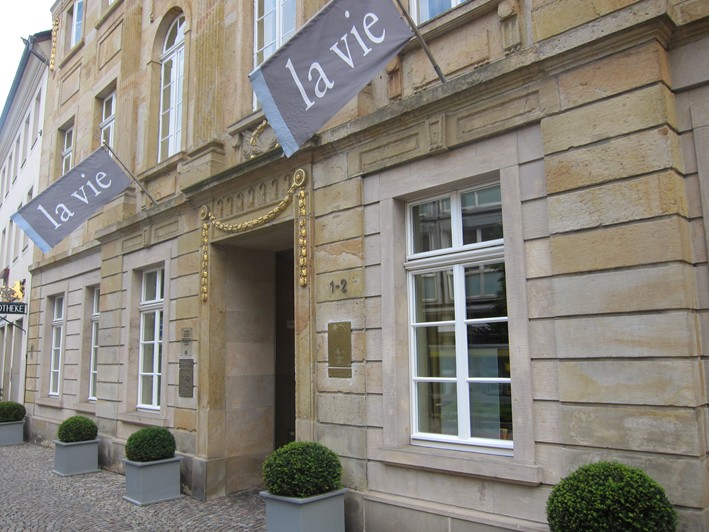
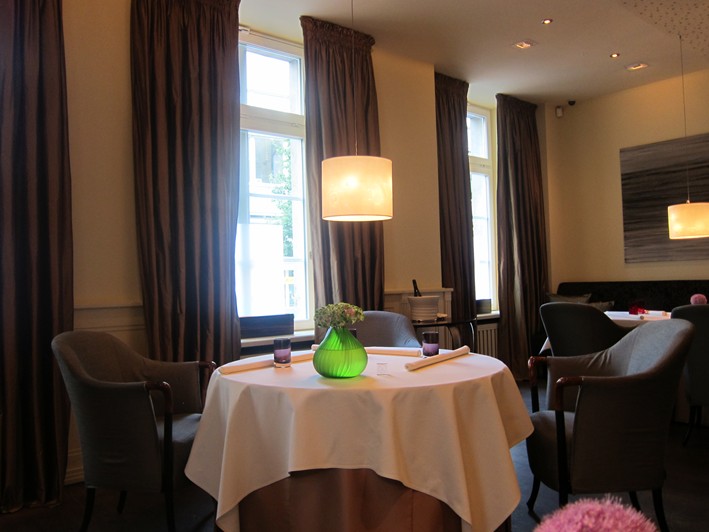
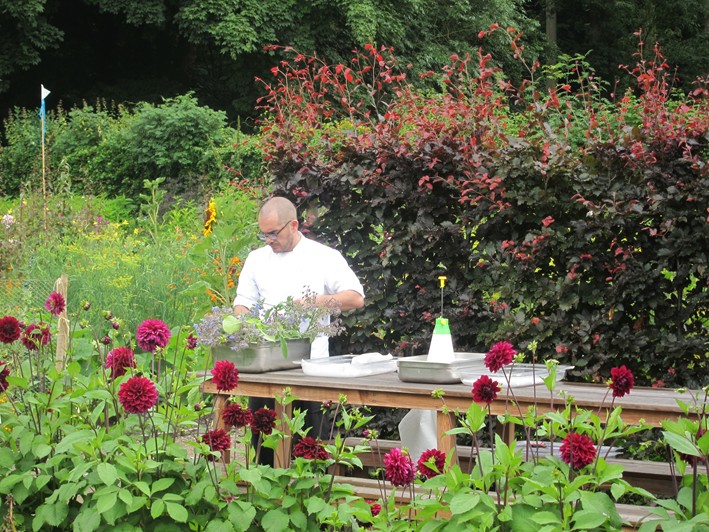
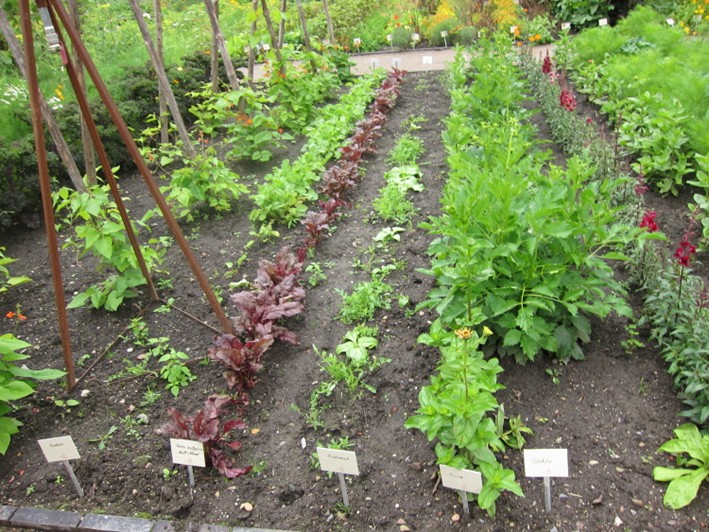
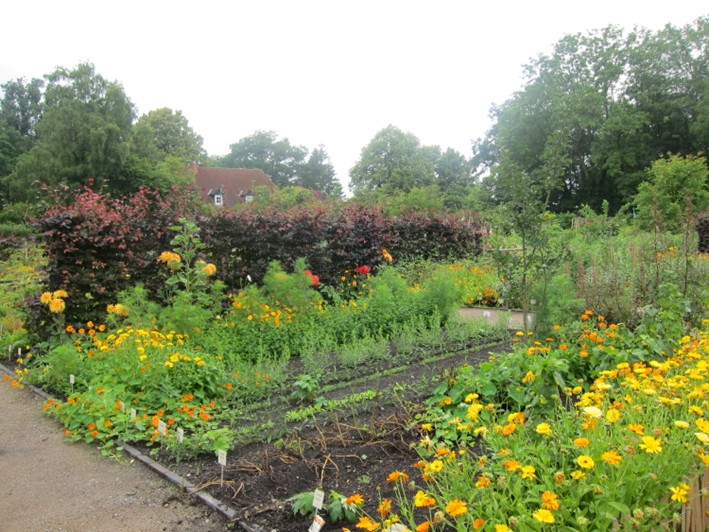
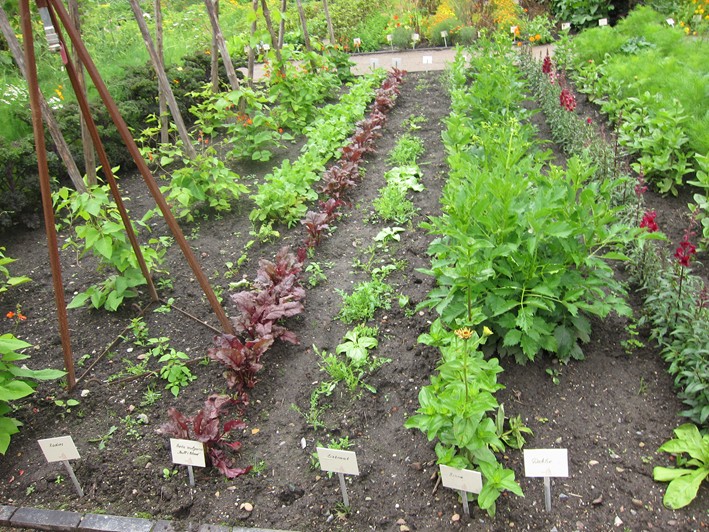
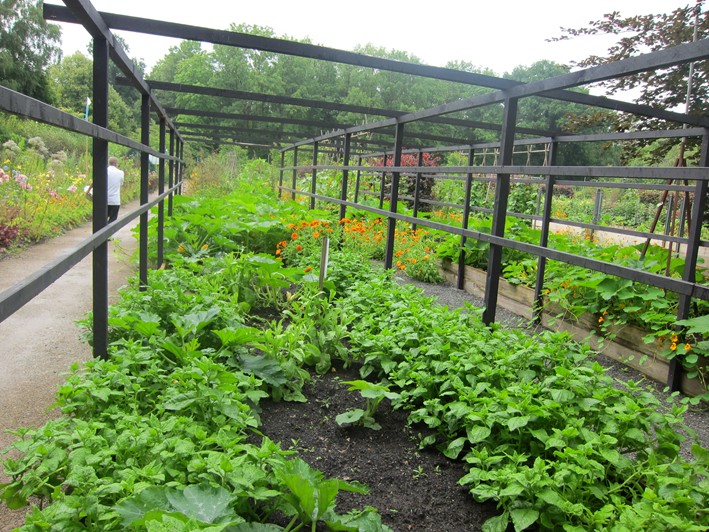
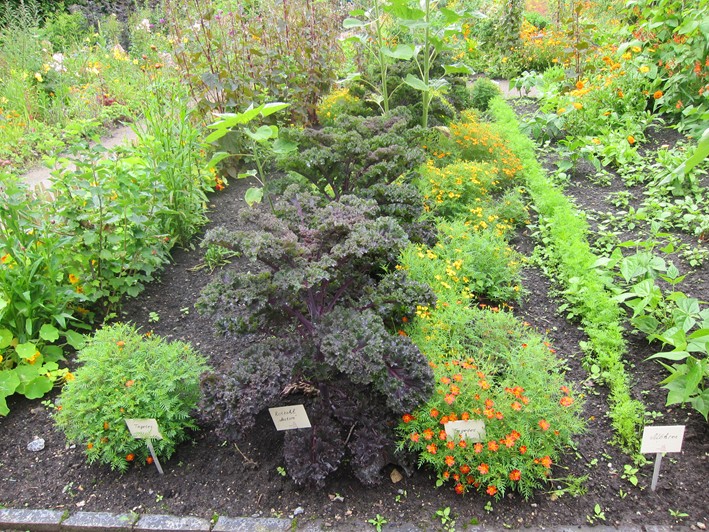
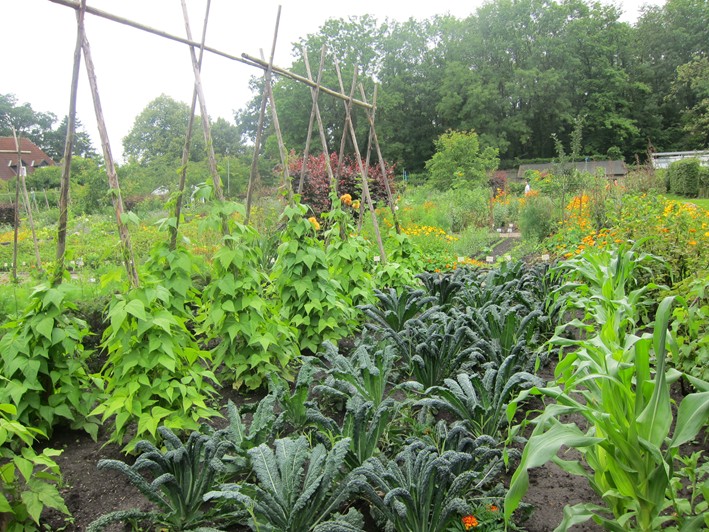

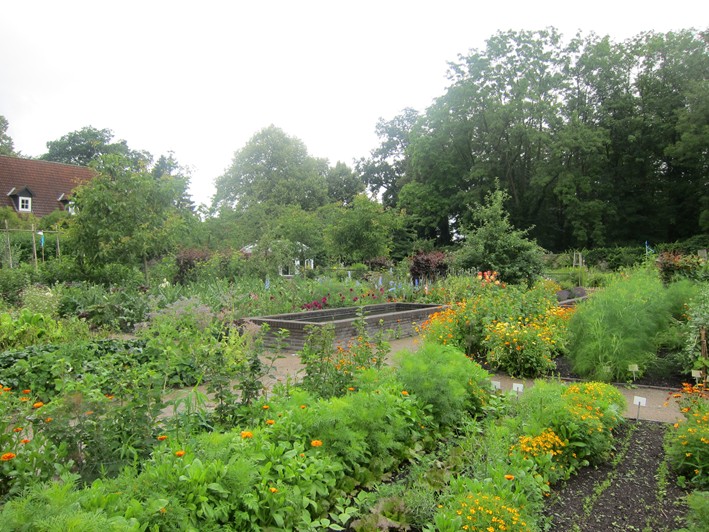
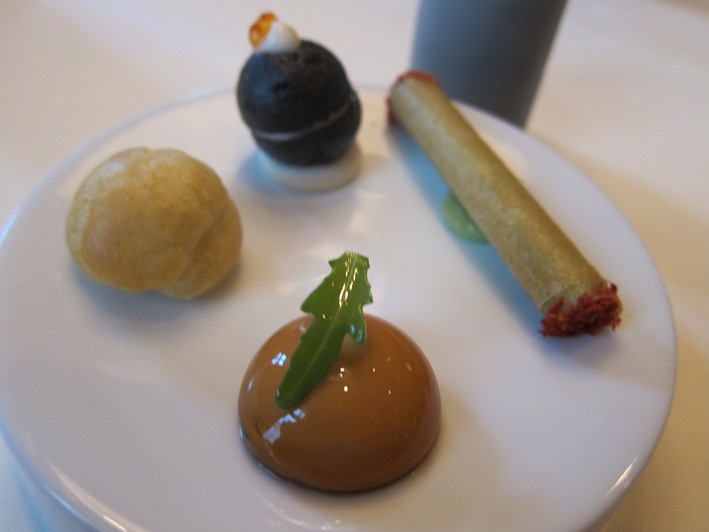


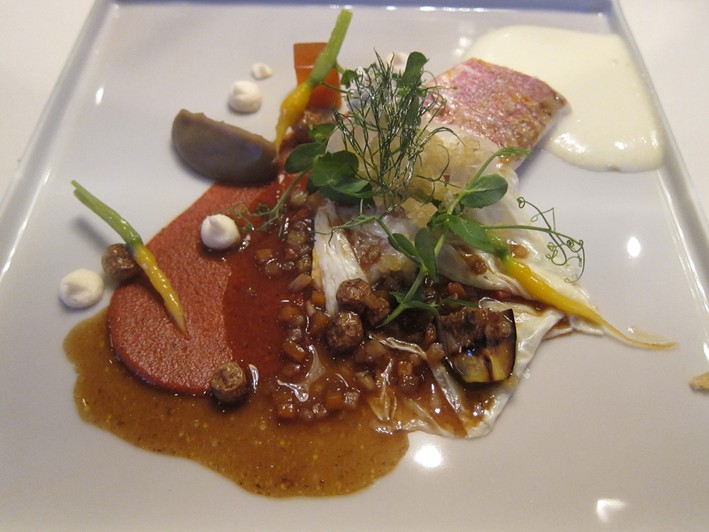
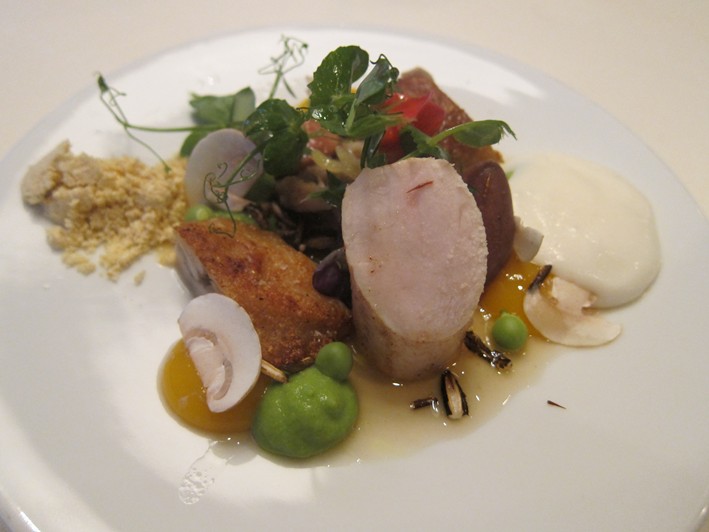
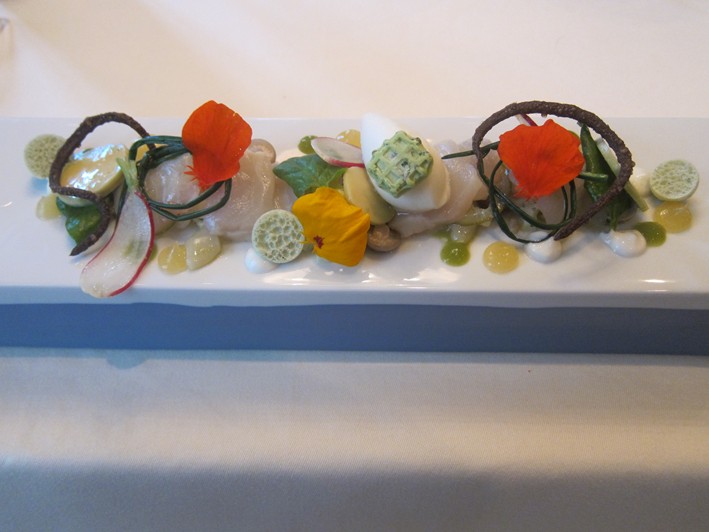
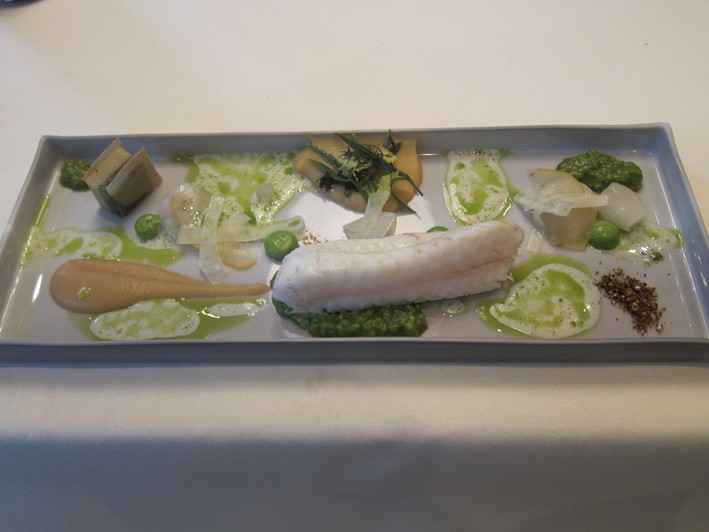
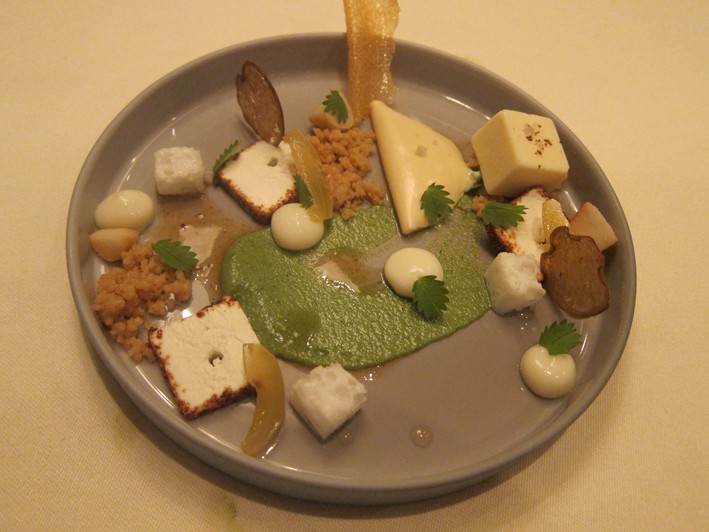

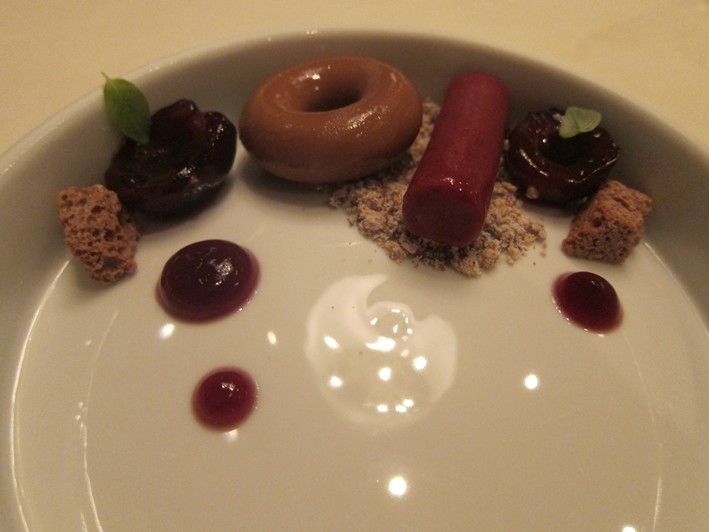
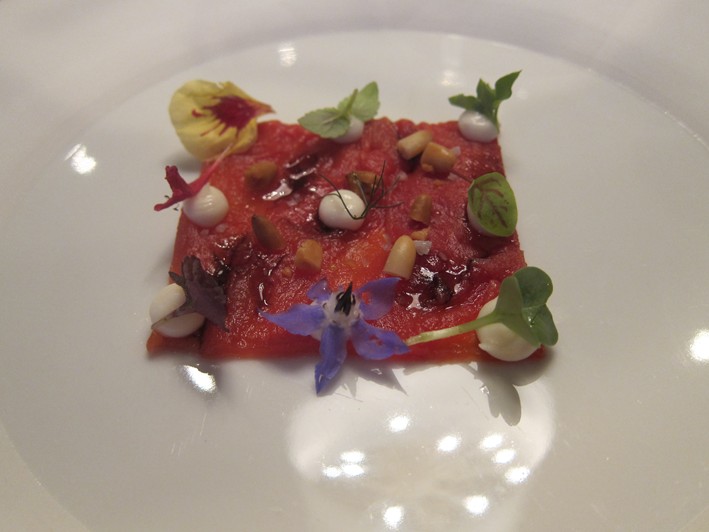
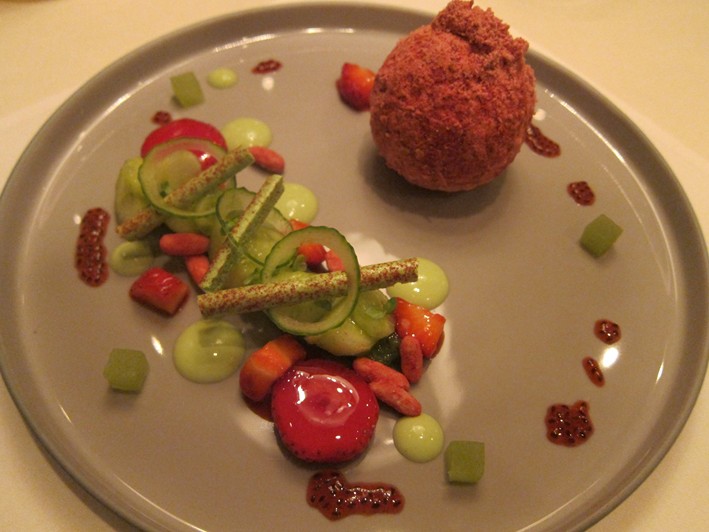
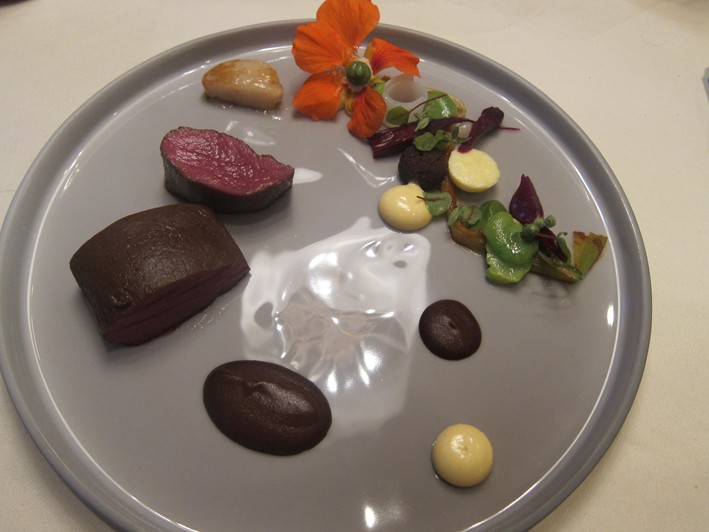
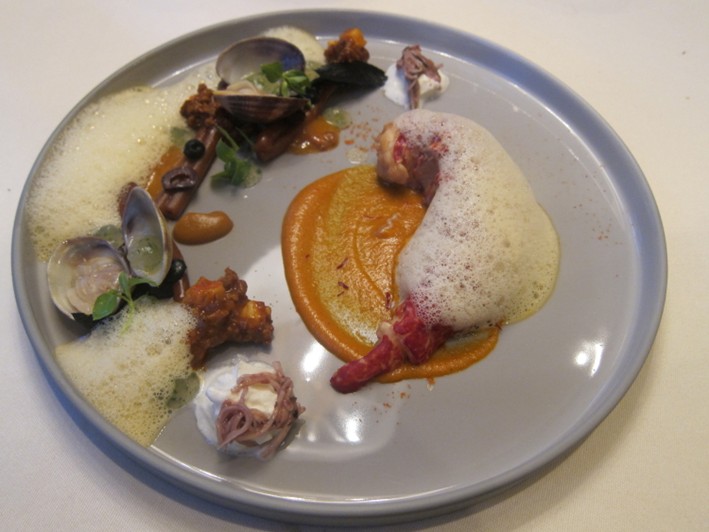
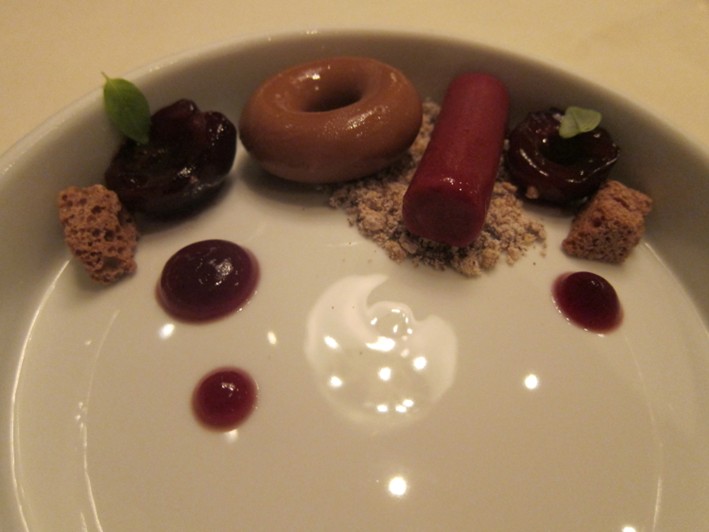
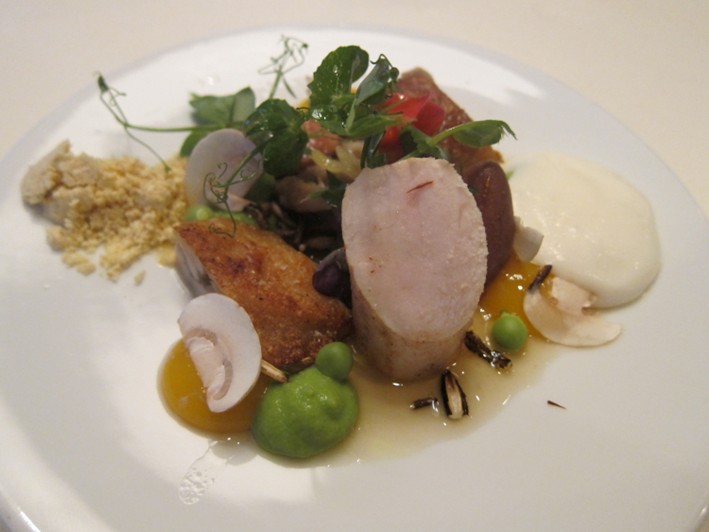
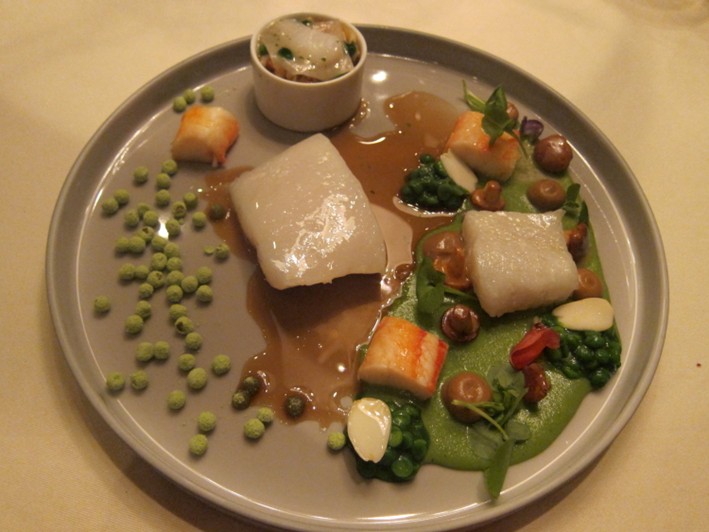

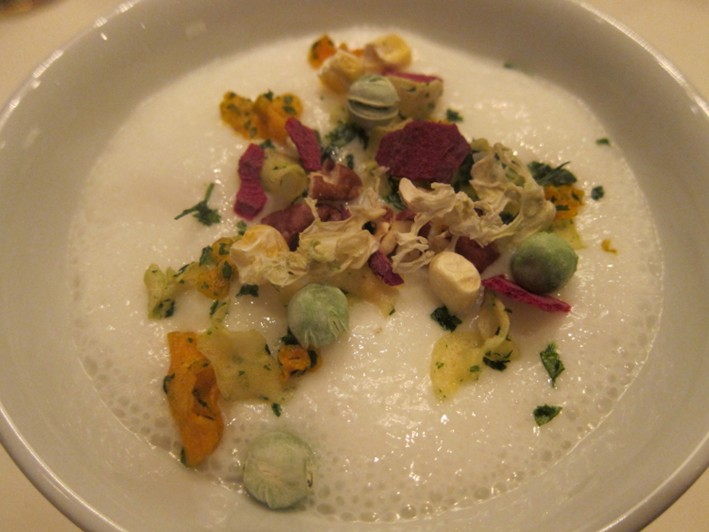
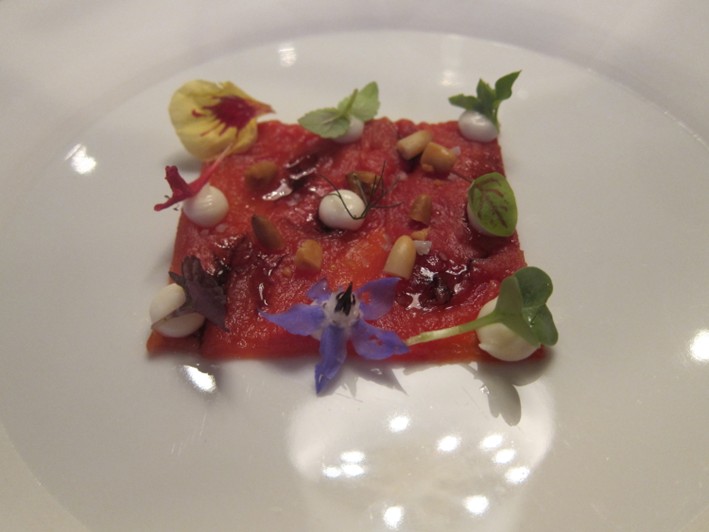
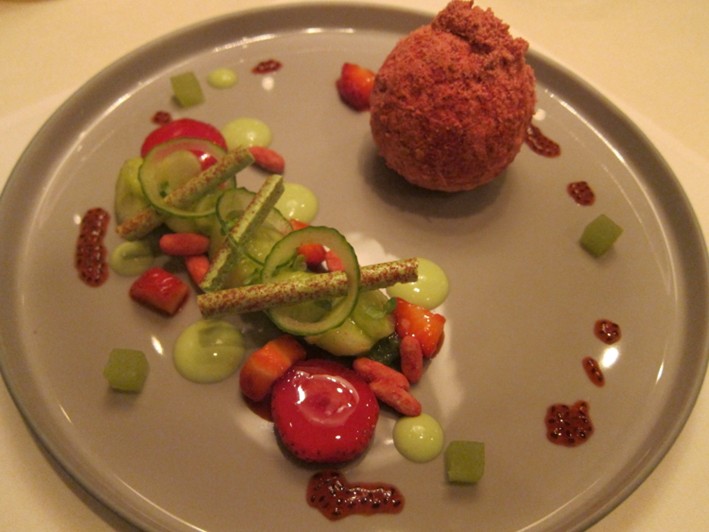



Richard Bagnold
I had my Birthday celebration here (Jun '13) and from the moment they picked us up from the Bahnhof (train station) in their complimentary service (for any diner) and on entering it was as if we were in a couple's home. The dishes were absolutely meticulous, all beautifully crafted and just simply worked sperbly. I only had one course out of the 10 that I was not a fan of (accompanying sauce with the fillet of beef was a little too powerful) but apart from that the textures, balance of flavour and sheer skill was undeniably top grade all round. Highlights for me: the mackerel platter course and although I am aware not strictly a course the mini banana sorbet cones at the end were both absolutely explosive. Quiet restaurant and smokers were welcomed to take breaks during the meal in the garden and have drinks taken to them if necessary.
Name unavailable
I was myself at La vie in July. It was a fabulous experience. I highly recommend it. Andy as recommended by you last year I tried Oud Sluis but La Vie is way better and the service was flawless. The chef was very polite and spoke to all the tables. Wonderful